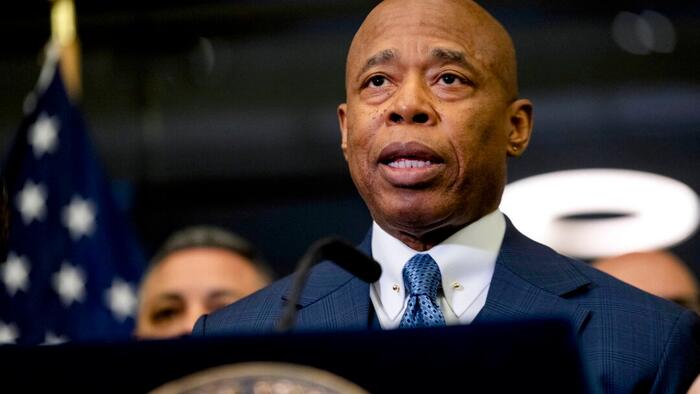In a recent interview, New York City Mayor Eric Adams articulated his plans to potentially circumvent the City Council to modify the city’s sanctuary city law, which currently limits the police department’s cooperation with federal immigration authorities regarding the immigration status of individuals in the city. This statement arose in the context of a planned meeting with Tom Homan, the incoming Trump administration’s border czar. During the exchange with CBS News host Marcia Kramer, Adams expressed his desire to prioritize the deportation of criminal undocumented individuals, particularly focusing on dangerous gangs, such as those from Venezuela, which he claims prey on both citizens and vulnerable migrants. His assertion underscores a shift in approach from his prior support of the sanctuary city framework and indicates his increasing frustration with the City Council’s steadfastness on sanctuary policies.
Adams pointed out that the City Council has made it clear they are not open to altering the existing sanctuary law, expressing his belief that their stance is misguided. He referred to this as a significant obstacle as he contemplates executive actions that could help him manage public safety concerns more assertively. Adams emphasized his commitment to safeguarding the city’s residents, suggesting that given the council’s refusal to budge, he is now pursuing “plan B” — a consideration of his executive powers to tackle the issue of violent crime associated with undocumented residents. The mayor’s dialogue indicates a pivot in his perspective, as he seeks to balance the city’s ethos as a sanctuary for immigrants with the imperative of ensuring public safety.
Earlier in his term and even before the recent elections, Adams had termed the need for stricter immigration enforcement as pressing. His meeting with Homan is anticipated not only as an opportunity to discuss a targeted approach toward violent offenders but also as a platform to articulate New York City’s position on the complex immigration crisis. Adams has evoked the necessity of distinguishing between criminal elements and the larger body of immigrants and asylum seekers, whom he sees as unfairly categorized under blanket rhetoric used in the immigration debate. His insistence on this differentiation highlights the broader narrative of how cities must navigate the intersection of local governance with federal immigration policies.
As the mayor prepares for the upcoming discussions, he has called on his legal team to explore “options” available to him, indicating a thorough examination of legal avenues that could potentially enable him to act without City Council approval. He reiterated his longstanding concern about violent offenders and the criminal activities related to unauthorized individuals within the city, arguing for a framework that channels resources toward mitigating these dangers rather than broad measures that impact the entire immigrant community under sanctuary policies. This clearly indicates a strategy that prioritizes public safety while attempting to maintain some cohesion with the city’s identity as a sanctuary.
Tom Homan, known for his firm stance on immigration enforcement, has consistently warned sanctuary cities about potential repercussions following the upcoming changes in federal immigration policy under Trump’s administration. His advocacy for a focus on deporting criminal illegal immigrants aligns with Adams’ recent public statements and hints at a prospective partnership between local and federal authorities aimed at addressing the challenges posed by crime within immigrant communities. This collaboration could redefine how New York City interacts with federal immigration laws, especially in the wake of the Trump administration’s promises to reshape enforcement priorities.
In summary, Mayor Adams’ evolving stance regarding New York City’s sanctuary city law reflects the complexities of managing local public safety while remaining committed to immigrant rights. His upcoming meeting with Homan will likely serve as a pivotal moment in determining how to navigate these competing interests effectively. As Adams explores executive options in light of the City Council’s unwillingness to support changes, the broader implications for both the city and its immigrant population remain to be seen. The unfolding scenario underscores the ongoing national dialogue about immigration policies, public safety, and local governance as cities grapple with the realities of criminality among undocumented populations amid calls for comprehensive reform at the federal level.

